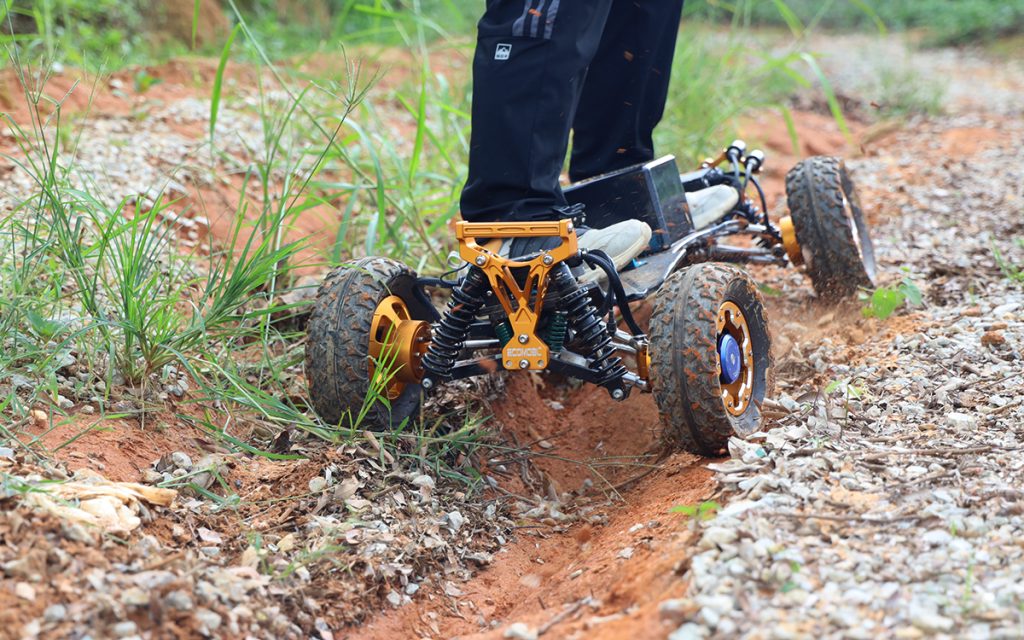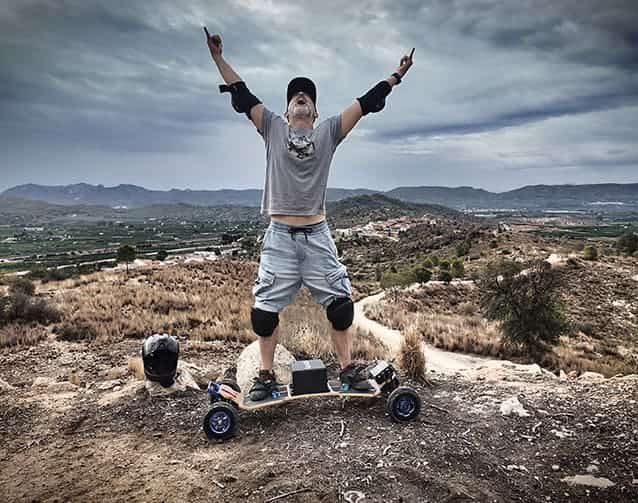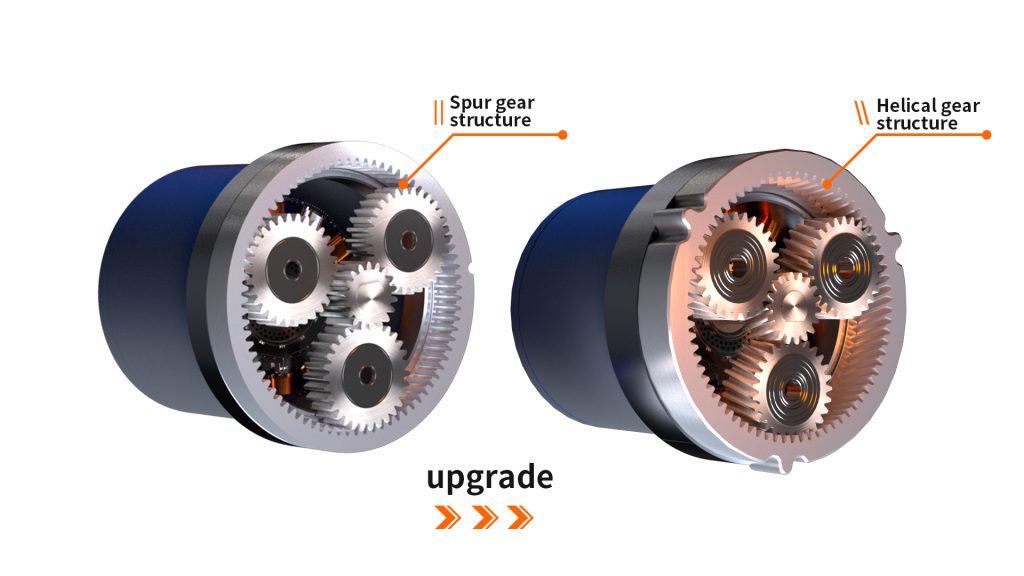When it comes to electric skateboard drive systems, two technologies dominate the market: planetary gear drives and belt drives.
Both are powerful in their own way, but they differ greatly in design, performance, maintenance, and terrain capability. Whether you’re gliding across smooth city streets or powering through rocky trails, understanding how each drive works is key to choosing the perfect board for your riding style.
Overview: The Two Main Drive Systems
1. Planetary Gear-Driven Electric Skateboard
A planetary gear-driven electric skateboard uses an internal gear system to transfer motor power to the wheels. It consists of:
-
A sun gear (center gear)
-
Multiple planet gears that rotate around the sun gear
-
An outer ring gear that connects the system to the wheel
This compact and enclosed mechanism allows efficient power transfer while keeping gears protected from dust, water, and impact.
2. Belt-Driven Electric Skateboard
A belt-driven electric skateboard uses pulleys and rubber belts to transmit power. The motor pulley turns the belt, which spins the wheel pulley, propelling the board forward.
This open setup makes it easy to modify and repair, but it’s more prone to dirt, small stones, and water, which can shorten its lifespan.
Planetary Gear Drive vs. Belt Drive: Core Differences
| Aspect | Planetary Gear Drive | Belt Drive |
|---|---|---|
| Power Transmission | Internal metal gearset (sun, planet, ring gears) | External belt and pulley system |
| Design | Enclosed, compact, protected | Open, accessible, customizable |
| Durability | Very high – built for longevity | Moderate – belts wear and snap |
| Efficiency | Excellent torque with minimal energy loss | Good efficiency, depends on belt tension |
| Maintenance | Low – occasional greasing | Regular belt checks and cleaning |
| Noise | Quiet hum under load | Louder, whinier at higher speeds |
| Customization | Fixed ratios | Adjustable pulley ratios |
| Cost | Higher | More affordable |
| Best Terrain | Off-road, rough, all-terrain | Smooth pavement, city streets |
How Each System Performs in Real Life

Planetary Gear Drive: Compact Power and Reliability
Planetary gear systems are favored for their efficiency, torque, and low maintenance. The enclosed metal gears ensure smooth, stable power output without slipping, perfect for off-road, dirt, or mountain rides.
-
Smooth acceleration and braking
-
Compact design saves space and improves balance
-
Minimal upkeep, just regreasing every few months
-
Superior durability under demanding conditions
Because everything is enclosed, riders don’t have to worry about mud, dust, or debris interfering with performance.
Belt Drive: Flexible and Smooth for Street Riding
Belt-driven systems are ideal for urban commuters or riders who enjoy tinkering. The exposed design allows easy access to belts and pulleys, making upgrades and adjustments simple.
-
Customizable gear ratios by swapping pulleys
-
Smoother ride on flat pavement due to belt flexibility
-
Quieter cruising at moderate speeds
-
Easy repairs if the belt wears or snaps
However, belts are more prone to wear and can lose tension over time, requiring replacement after extended use or rough terrain rides.
Real Riders, Real Reviews

Across online communities and forums, riders share clear experiences comparing both systems.
Dan Myers, owner of an Ecomobl M24 Pro, explained:
“I’ve had to change both rear belts on my Propel X4S one of them twice in 150 miles. My M24? Same mileage, no issues. I regreased it once, just being cautious. Took it into places I wouldn’t dare ride the X4S.”
Maarten de Smet, an experienced gear drive user, added:
“This is a Dana Spicer planetary hub used in agricultural machines. It doesn’t get better than this. Gear drives, when maintained, are rock solid.”
Across Reddit, YouTube, and Facebook groups like Ecomobl Eboard Owners, riders consistently note that:
-
Gear drives handle rugged trails, mud, and dust far better than belts.
-
Belt drives are easier to fix but need regular maintenance and part replacements.
The consensus?
If you want a low-maintenance drive system that endures tough trails, go for planetary gear. If you love customizing and easy repairs, a belt system may be your style.
Performance, Price, and Quality Comparison
| Category | Planetary Gear Drive | Belt Drive |
|---|---|---|
| Performance | Stable torque, great for off-road | Smooth acceleration, good for roads |
| Price | Generally higher | More budget-friendly |
| Quality | Rugged, long service life | Belts wear faster, requiring frequent replacements |
| Reliability | Excellent – sealed and protected | Moderate – open and exposed |
| Maintenance Frequency | Low | High |
Which Is Better for Mountain Skateboards?

For mountain or all-terrain electric skateboards, the planetary gear system is the clear winner.
Its enclosed metal construction protects against mud, rocks, and debris. The consistent torque output provides the control and confidence needed on steep hills, gravel paths, or forest trails.
In comparison, belt drives struggle in dirty environments where debris can jam or damage the exposed belt system.
If your adventures take you beyond the pavement, a planetary gear drive is the best investment.
Ecomobl’s Planetary Gear Drive Advantage
Ecomobl’s electric mountain skateboards are engineered for extreme performance and reliability. Their custom planetary gear drive trucks combine a powerful motor and a precision gearbox to deliver exceptional torque and control.
Why Riders Choose Ecomobl Gear Drive Systems
-
Compact, sealed gearbox protects from mud and water
-
High torque output for conquering steep terrain
-
Durable metal gears for long-term performance
-
Smooth, consistent power delivery across all surfaces
Ecomobl models like the M24 Pro, Telum BA, and Hybrid X5 showcase how advanced planetary gear technology transforms off-road e-skating, offering riders power, protection, and performance that belt systems simply can’t match.
How to Maintain a Planetary Gear Motor

To keep your planetary gear system running smoothly, regular maintenance is simple but important.
-
Interval: Every 6 months or after 500 km of use
-
Task: Remove old grease and apply new lubricant
-
Grease Type: Rated between -20°C to 120°C
-
Low-temperature resistance prevents freezing in winter
-
High-temperature protection prevents liquefaction or fire
-
Proper lubrication ensures your gearbox remains efficient, quiet, and long-lasting.
Final Thoughts: Choosing the Right Drive System
The decision between planetary gear and belt drive comes down to your priorities and riding environment.
| You Prefer… | Choose… |
|---|---|
| Off-road, dirt, and mountain riding | Planetary Gear Drive |
| All-weather durability | Planetary Gear Drive |
| Long-term reliability with low maintenance | Planetary Gear Drive |
| City commuting and customization | Belt Drive |
| Lighter setup and easy part swaps | Belt Drive |
| Lower purchase cost | Belt Drive |
In short:
-
Planetary gear drives are the tough, low-maintenance option for riders who love the wild outdoors.
-
Belt drives are the versatile, user-friendly choice for smooth roads and casual commuting.
Motor specs, speed, and power mean little if your drivetrain fails mid-ride. Choose the system that supports your terrain, your lifestyle, and your sense of adventure.
Whether it’s the rugged control of planetary gears or the smooth customization of belt drives, your decision will define how and where you ride next.
Pro Tip: When comparing top models like the Ecomobl M24, Telum BA, or Hybrid X5, don’t just look at the specs. Focus on the drive system and terrain compatibility because the right drivetrain turns every ride into a true adventure.




